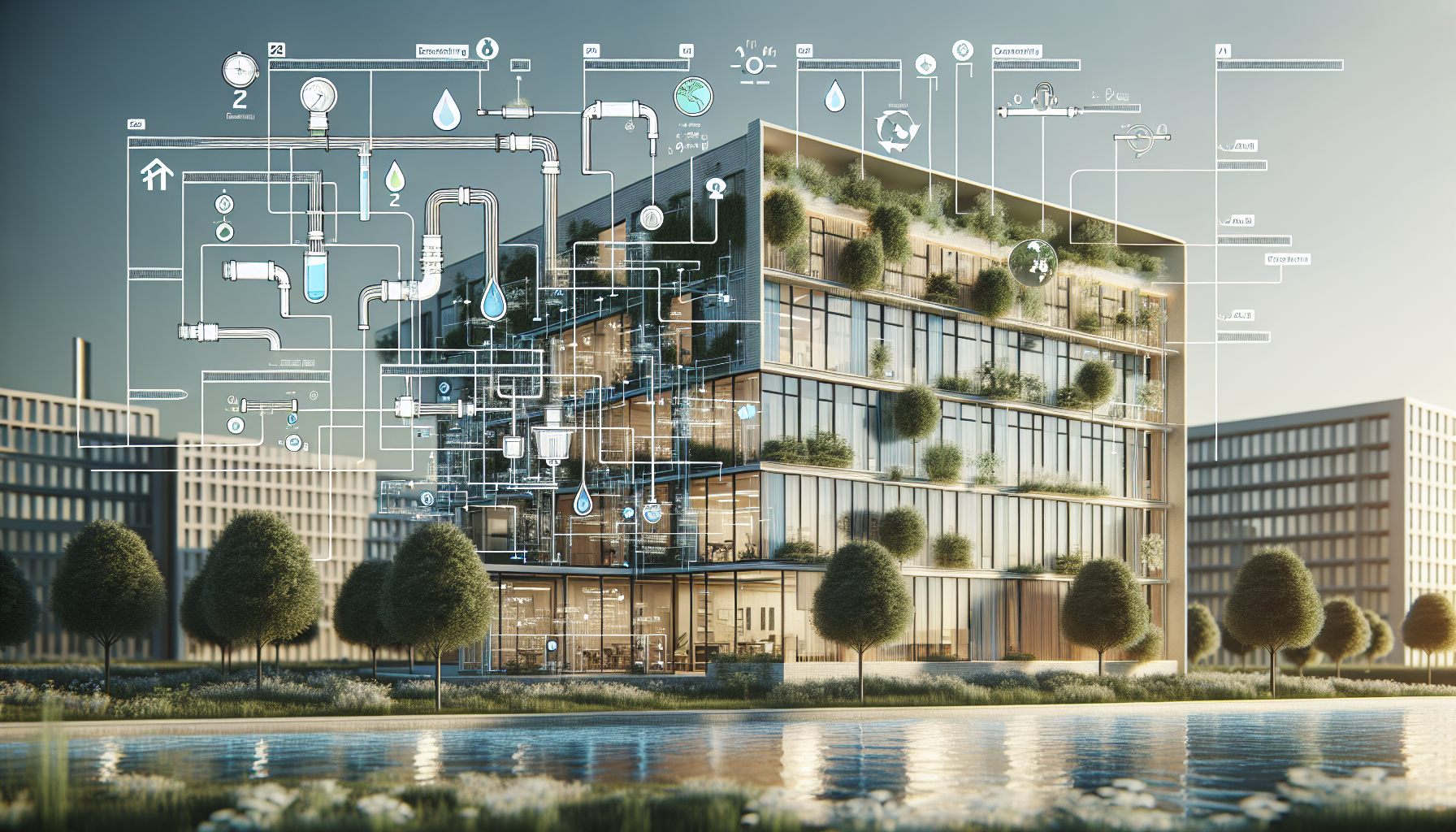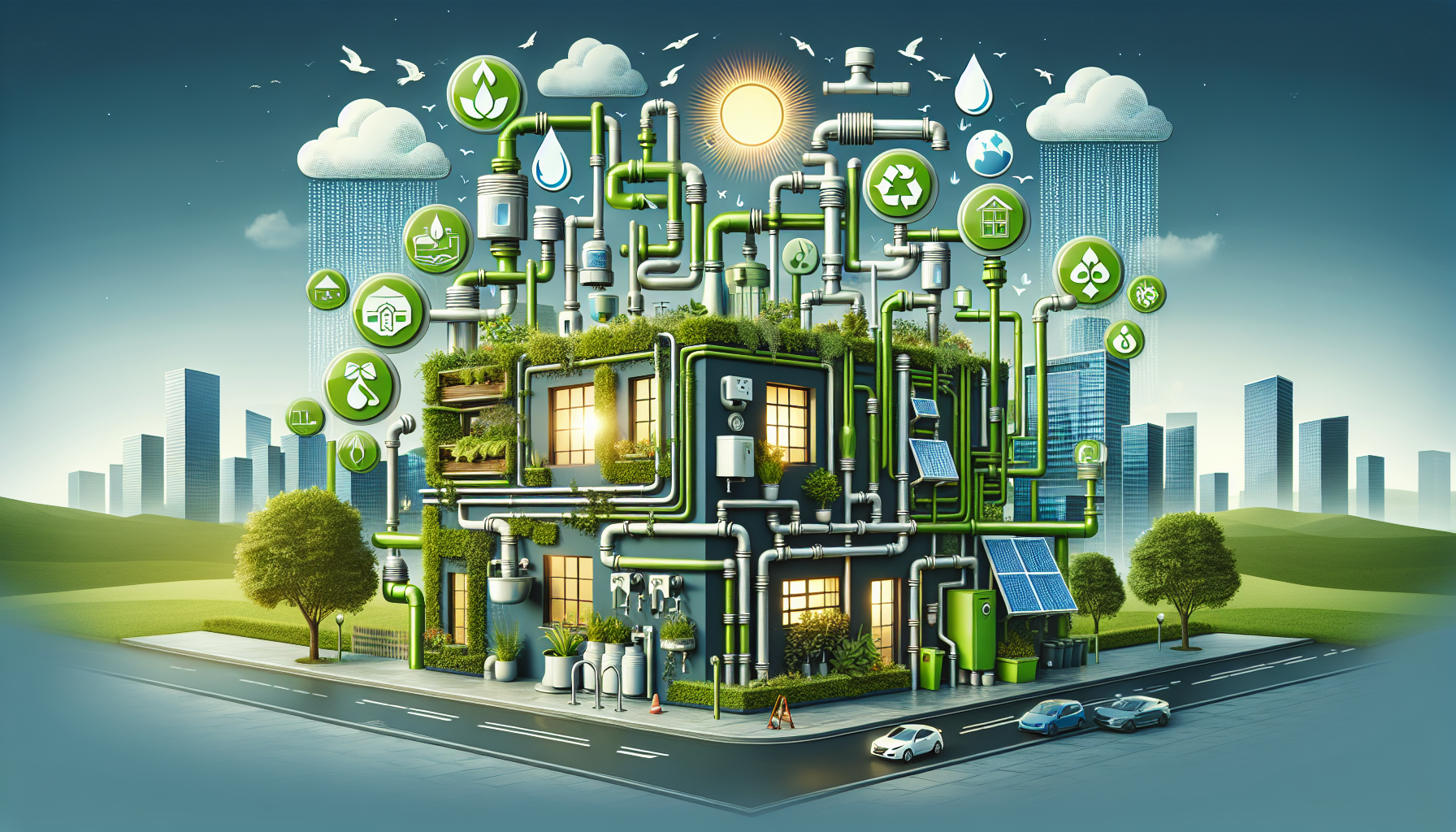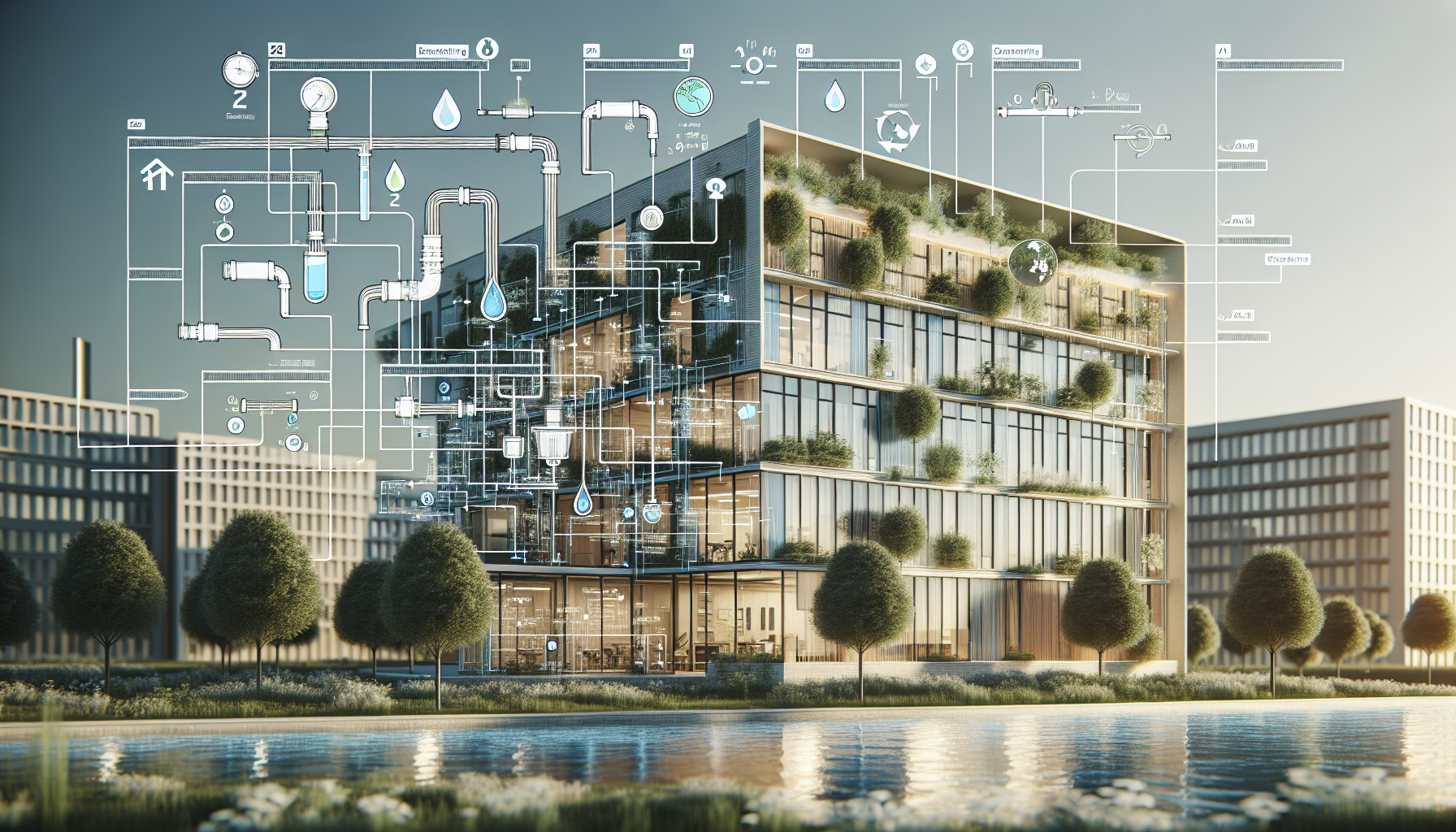When it comes to sustainable buildings, plumbing design considerations play a vital role in ensuring efficient water usage and minimizing environmental impact. From using low-flow fixtures to implementing rainwater harvesting systems, there are various options to explore. This article explores the key plumbing design considerations for sustainable buildings, highlighting the importance of water conservation and offering practical tips for reducing water waste. Whether you’re a homeowner or a professional in the construction industry, this article has valuable insights to help you create eco-friendly and sustainable plumbing systems for your building projects.

Water Conservation
Low-flow Fixtures
When designing a sustainable building, one of the main considerations is water conservation. Traditional plumbing fixtures can be a significant source of water waste, but low-flow fixtures offer an excellent solution. These fixtures, such as low-flow toilets, faucets, and showerheads, are designed to reduce water consumption without sacrificing performance. By using less water while still providing adequate functionality, low-flow fixtures can significantly reduce water usage in a building.
Dual-flush Toilets
Another way to promote water conservation is through the use of dual-flush toilets. These toilets have two different flushing options: one for solid waste and one for liquid waste. By providing different flushing strengths for different types of waste, dual-flush toilets allow users to choose the appropriate amount of water necessary. This targeted approach to flushing can drastically reduce water waste and promote more efficient water use in a building.
Rainwater Harvesting
Rainwater harvesting is a sustainable practice that involves collecting and storing rainwater for later use. By installing a rainwater harvesting system, a building can utilize rainwater for various purposes such as landscape irrigation, toilet flushing, or even non-potable uses like laundry or cleaning. This not only reduces demand for freshwater sources but also helps alleviate stormwater runoff, which can cause environmental issues. Rainwater harvesting systems can be integrated into a building’s plumbing design to ensure efficient water usage and conservation.
Greywater Systems
Greywater systems are another effective method for water conservation in sustainable buildings. Greywater refers to non-potable water generated from sources like sinks, showers, and washing machines. Instead of letting this water go to waste, greywater systems collect and treat it for reuse in irrigation or toilet flushing. By diverting and treating greywater, buildings can significantly reduce their reliance on fresh water, leading to substantial water conservation and increased sustainability.
Energy Efficiency
Hot Water Recirculation
In addition to water conservation, energy efficiency is a crucial aspect of sustainable plumbing design. One way to achieve energy efficiency is through the use of hot water recirculation systems. These systems ensure that hot water is readily available at fixtures without the need for wasteful waiting or running the tap. By circulating hot water through a dedicated loop, hot water recirculation systems minimize both water and energy waste, as there is no need to constantly run water until it reaches the desired temperature.
Insulated Pipes
Another consideration for energy-efficient plumbing design is the use of insulated pipes. Insulation helps retain heat within the pipe, minimizing heat loss and reducing the energy required to maintain hot water temperatures. By insulating hot water pipes, buildings can improve energy efficiency and reduce the amount of energy needed to heat water, resulting in decreased utility costs and a more sustainable plumbing system.
Solar Water Heating
Utilizing renewable energy sources is an excellent way to enhance the energy efficiency of a building’s plumbing system. Solar water heating systems harness the power of the sun to heat water, reducing or even eliminating the need for traditional energy sources. These systems consist of solar collectors that absorb solar radiation and transfer it to the water supply. By incorporating solar water heating into the plumbing design, buildings can significantly reduce their reliance on fossil fuels, lower carbon emissions, and achieve a greener, more sustainable operation.
Waste Management
Recycling and Reuse
Waste management is an essential aspect of sustainable plumbing design. Incorporating recycling and reuse systems into the plumbing system helps minimize waste generation and promotes a circular economy. By using materials that can be recycled or repurposed, such as plastic pipes or fixtures made from recycled materials, buildings can contribute to a more sustainable construction industry and help reduce landfill waste.
Composting Toilets
Composting toilets offer a sustainable alternative to traditional flush toilets. These toilets use natural processes to convert human waste into compost, which can then be used as a nutrient-rich fertilizer. By separating solid and liquid waste and providing proper ventilation, composting toilets can effectively treat waste on-site, reducing the need for water-intensive flushing and minimizing the impact on the environment. Incorporating composting toilets into the plumbing design of a sustainable building can significantly contribute to waste reduction and overall sustainability goals.
Septic Systems
For buildings located in areas without access to a centralized sewer system, septic systems provide a sustainable wastewater management solution. Septic systems consist of underground tanks that collect and treat wastewater on-site. Through a series of natural processes, such as bacterial decomposition and filtration, septic systems can effectively treat wastewater before it is released back into the environment. Properly designed and maintained septic systems can ensure the safe disposal of wastewater while minimizing environmental impacts.
Grease Traps
Grease traps are an integral part of waste management in commercial kitchens and food establishments. These devices capture and separate grease, fats, and oils from wastewater to prevent them from entering the sewer system. By capturing and containing these substances, grease traps help prevent clogs and blockages in pipes and sewer lines. Properly maintained grease traps not only ensure operational efficiency but also reduce the potential for environmental contamination. Incorporating grease traps into the plumbing design of commercial kitchens is essential for sustainable waste management practices.
Material Selection
Piping Materials
Choosing the right piping materials is crucial for sustainable plumbing design. Opting for eco-friendly materials, such as PEX (cross-linked polyethylene) pipes or pipes made from recycled materials, can significantly reduce the environmental impact of a building’s plumbing system. These materials are durable, corrosion-resistant, and have a lower carbon footprint compared to traditional materials like copper or PVC. Selecting sustainable piping materials not only contributes to environmental stewardship but also ensures the longevity and performance of the plumbing system.
Insulation Materials
Insulation is essential for both energy efficiency and water conservation in plumbing systems. When selecting insulation materials, it is essential to choose options that are environmentally friendly and have a minimal impact on indoor air quality. Sustainable insulation materials, such as cellulose or natural wool, help prevent heat loss or gain in pipes and reduce energy requirements. By using sustainable insulation materials, buildings can improve energy efficiency and promote a healthier indoor environment.
Eco-friendly Sealants
Sealants play a vital role in plumbing system installation and maintenance, providing watertight connections and preventing leaks. Opting for eco-friendly sealants, such as low VOC (volatile organic compound) or water-based alternatives, helps minimize environmental impacts and ensures healthier indoor air quality. These sealants are typically made from natural or recycled materials, reducing the release of harmful chemicals into the environment. By choosing eco-friendly sealants, sustainable buildings can further enhance their environmental performance while maintaining the integrity of their plumbing systems.

Accessibility and Safety
ADA Compliance
Accessibility and safety are essential considerations in sustainable plumbing design to ensure inclusivity and compliance with regulations. Following the guidelines set by the Americans with Disabilities Act (ADA) guarantees that individuals with disabilities have equal access to plumbing fixtures. ADA-compliant fixtures and features, such as grab bars, lever handles, and properly positioned sinks and toilets, contribute to a more accessible and user-friendly environment. By incorporating ADA compliance into plumbing design, buildings can create spaces that are inclusive, safe, and welcoming for all individuals.
Anti-scald Devices
To ensure the safety and comfort of building occupants, anti-scald devices should be integrated into the plumbing system. These devices, such as thermostatic mixing valves, regulate and control water temperature to prevent scalding. By maintaining a safe and consistent water temperature, anti-scald devices minimize the risk of burns or injuries, particularly in settings such as schools, hospitals, or residential buildings. Installing anti-scald devices in the plumbing design promotes safety and provides peace of mind to users.
Emergency Shut-off Systems
Emergency shut-off systems are essential in any plumbing design to quickly stop the flow of water in case of leaks, pipe bursts, or other emergencies. These systems typically incorporate shut-off valves or automatic sensors that detect abnormal water flow and trigger immediate shut off. By promptly stopping water supply in emergency situations, these systems help prevent extensive damage, minimize water waste, and ensure the safety of the building and its occupants. Incorporating emergency shut-off systems into plumbing design is a fundamental step towards a safer and more sustainable building.

